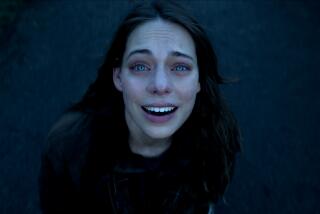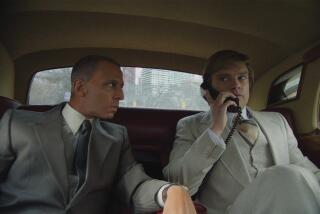Review: A deep-cut masterwork, âDe Humani Corporis Fabricaâ is already one of 2023âs best movies
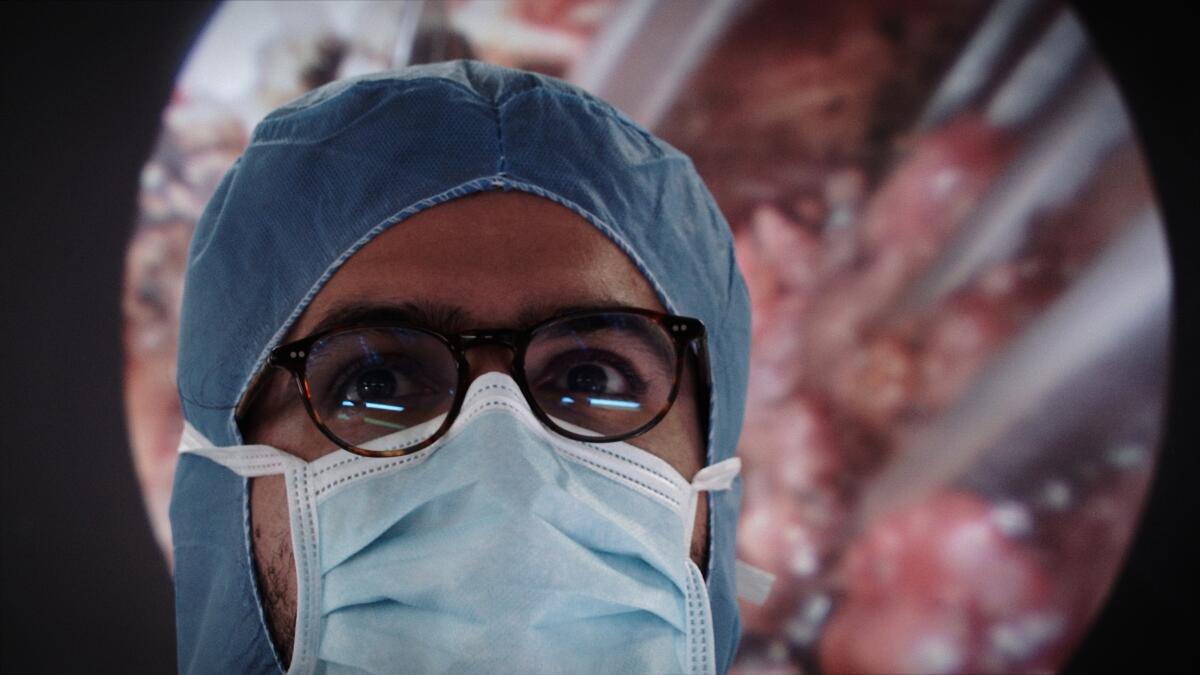
I havenât gaped at, shuddered through, turned away from or wincingly crossed my legs during a better movie this year than âDe Humani Corporis Fabrica.â A headlong plunge into the pulsing caverns and blood-soaked passageways of the human body, this nonfiction shocker â the latest directed by Lucien Castaing-Taylor and VĂ©rĂ©na Paravel (âLeviathan,â âCanibaâ) of the Harvard Sensory Ethnography Lab â stitches a series of surgical procedures into an astonishment of sight and sound, drills and forceps, flesh and blood, life and death. Part Frederick Wiseman-esque medical study, part endoscopic-horror tour de force, it is a thing to be experienced, ideally in a theater â a movie theater, not an operating one, though the filmmakers have a particular genius for blurring the difference.
Their latest work borrows its title from Andreas Vesaliusâ 16th century study of human anatomy and owes its existence to custom-built cameras tiny enough to peer into brains and slip through intestines â and, in one dazzlingly reflexive moment, gaze directly into an eyeball undergoing a lens transplant. That particular sequence provides a good early test of your fight-or-flight instincts. Maybe your own eyes will snap shut at the close-up of all those little red veins, the âClockwork Orangeâ-style speculum and the scrubbing, massaging motions of a probe against the cornea, followed by the sudden pull-back of the camera to confirm that all this violence is, in fact, being done to the highly sensitive (if temporarily numbed) organ of a fully conscious human being.
Then again, perhaps youâll be mesmerized, even through splayed fingers, by the sight of experts at work, and also by the strange, otherworldly images their work generates. Thereâs the fiery red-orange glow of the iris, the sudden onrush of liquid that bathes and (one hopes) soothes, and finally that last little tug of the forceps as â ta-da! â the new lens snaps into place with satisfying, ship-in-a-bottle precision. Itâs amazing what you the spectator can withstand, and what the human body can withstand too. This movie, which the Los Angeles Film Critics Assn. recently honored with its Douglas Edwards Experimental Film Award, may be the definition of ânot for the squeamish.â And yet this champion squeamer emerged from it (twice!) with a newfound awe for the resilience of the flesh and a deeper-than-ever respect for the doctors who so fearlessly carve into it.
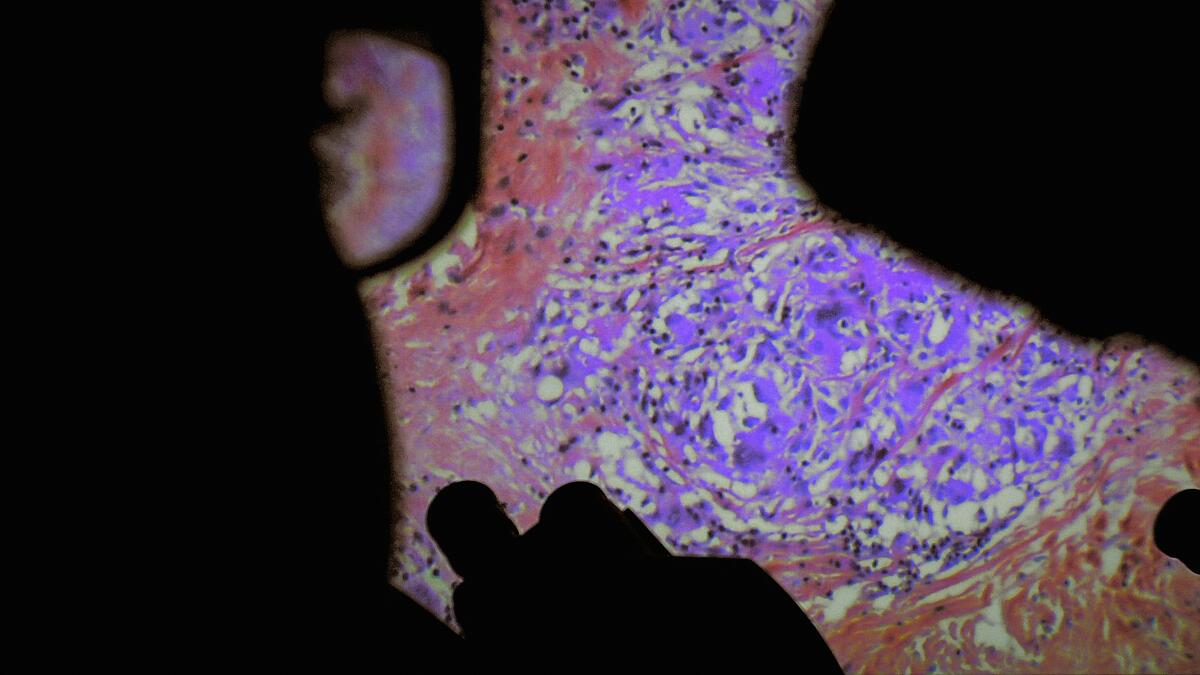
Shot over more than six years across eight French hospitals (chiefly the Beaujon Hospital and the Bichat-Claude Bernard Hospital, both located in Paris), âDe Humani Corporis Fabricaâ was made in close collaboration with patients and medical professionals, many of whom we see in its more conventionally shot footage of rooms and operating tables. Castaing-Taylor and Paravel layer this material throughout, acclimating us to the routine rhythms of hospital life before zipping us, with a whoosh, to the next stop on their surgical mystery tour. Itâs often a relief when they zip back out again; uncompromising avant-gardists though they may be, the filmmakers do want to keep you in your seat. Theyâre canny enough entertainers to dole out their spectacle with a steady hand.
The zooms in and out also establish a crucial, contrapuntal rhythm between doctors and patients, and also between the physical and the abstract. Easy as it is to get lost in all that jaw-dropping, cavity-probing imagery, Castaing-Taylor and Paravel never let us detach from the flesh-and-blood reality of what weâre looking at. Many of the operations are accompanied by surgeonsâ and nursesâ disembodied voices, sometimes making banal chitchat (two discuss the cost of rent in Clichy) and sometimes contextualizing the imagery youâre seeing. And it isnât always clear what youâre seeing: A C-section is gruesomely self-explanatory; the burnt-looking layers of a just-removed tumor, not so much. Iâm still not sure whatâs going on with all that feathery membranous material around a patientâs pituitary gland, or the precise purpose of the tiny instrument that strips, chisels and fires away its tubular surroundings, like a combination micro lawn mower and welding machine.
The technology is incredibly sophisticated. But âDe Humani Corporis Fabricaâ reminds us that, for all the ingenuity of those devices, there are always human hands operating them, and those hands are not always at their best or fully in control of what theyâre doing. One especially nerve-wracking sequence finds a surgeon brazenly attempting a Retzius-sparing prostatectomy for the first time (âI watched the master class by that Indian guyâ he says, none too encouragingly).
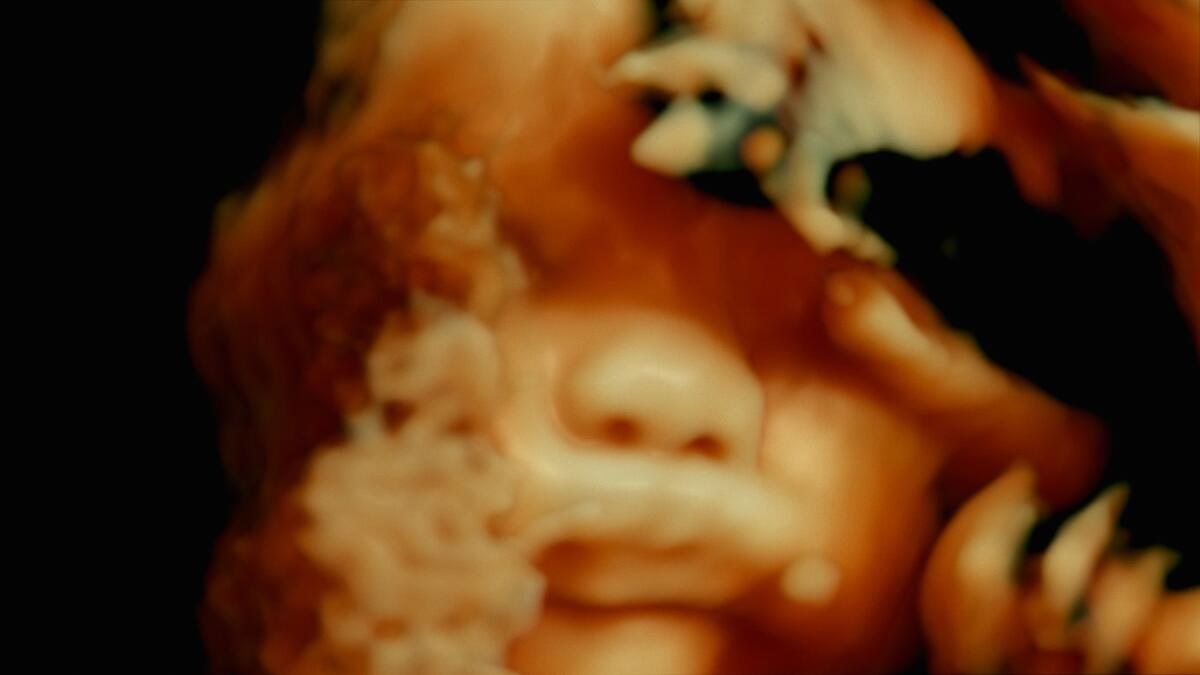
Even when things go relatively well â when blood doesnât leak, when instruments donât malfunction â the movie lingers meaningfully on its medical professionals and their everyday exasperation and exhaustion. We hear them curse and complain about grueling schedules and incompetent colleagues, about rampant understaffing and a workload as stressful as it is unrelenting. âIâm a robot. ⊠Iâm on the verge of a heart attack,â a doctor complains, right after tossing off a routine yet nightmarish-looking procedure involving a penis, a urethral drill and something ominously referred to as âthe Kalashnikov setting.â
Thereâs a telling irony in the idea that certain highly skilled medical professionals might not be especially good at taking care of themselves. In these moments, âDe Humani Corporis Fabricaâ becomes not just tense and flabbergasting but also deeply moving; it gets at the idea of a kind of spiritual and corporeal transference, the knowledge that healing other peopleâs bodies invariably exacts a toll on oneâs own. Thatâs no less true in the many scenes of nonsurgical care: in the hallway where a worker tries to coax a patient with dementia back into his room, or in the ICU where a nurse delivers a long and wrenching monologue about the horrors she witnesses on a daily basis. Itâs one of this extraordinary movieâs least graphic scenes and one of its most powerful, a reminder of how fragile and precious are the bonds that bind the body to the soul, the living and the dead.
âDe Humani Corporis Fabricaâ
In French with English subtitles
Not rated
Running time: 1 hour, 58 minutes
Playing: Starts April 28 at Laemmle Glendale
More to Read
Only good movies
Get the Indie Focus newsletter, Mark Olsen's weekly guide to the world of cinema.
You may occasionally receive promotional content from the Los Angeles Times.
